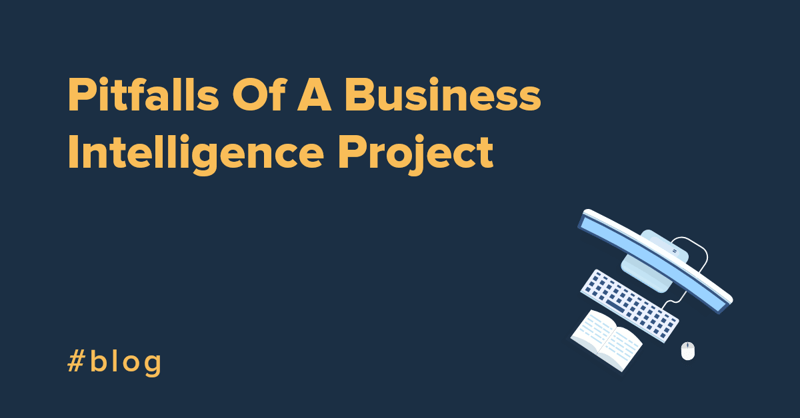Imagine what your team could be working on if they weren’t spending 80 percent of their time collecting, cleaning, and organizing datasets. Unfortunately, for most BI & analytics software providers, this idea remains a fantasy.
But just because this is the status-quo, doesn’t mean you should settle for it.
Slow and overly complex data preparation leads to several problems:
- Multiple applications storing different data for the same entities
- Low-quality or ‘dirty’ data impacting validity of analytics reports
- Poor data mapping and definitions
These pitfalls of better analytics for clients become major roadblocks, as the scale and complexity of analytics projects increases. Many of these take days, weeks or even months to overcome, preventing your development team from working on new areas of the business.
Before we begin: What is data preparation?
Data preparation is the process of cleaning and transforming raw data prior to processing and analysis. It is an important step that often involves reformatting data, making corrections to data, and the combining of data sets to enrich data.
While data preparation is great for one-time jobs, ad-hoc queries, and ad-hoc ideas, for datasets that are in constant use, it is too manual, repetitive and time-consuming to provide an effective solution.
And that’s where an optimized data integration process meets data preparation. By properly integrating your data sources, you can significantly reduce your time to value and ensure predictable, cost-effective scalability.
Sound like the solution you’re looking for?
Let’s take a closer look at how data integration can save you time and money in our three-step guide to simplifying data preparation and accelerating analytics.
1: Start with good sources
Quality data sourcing is often overlooked in the data preparation process. But, when you jump straight into data cleansing, without questioning the reliability or frequency of your sources, you create a lot of needless extra work.
Sure, you'll save time short-term, but by kicking the can down the road, you make it harder to reconcile issues in the future. Ultimately, poor data sourcing causes frustrating quality, accessibility, and formatting issues. It's like polishing an old, beat-up car – you’re just glossing over the real problem.
That’s where data integration becomes your greatest ally. If you’re regularly updating and curating your sources, you’re not going to have time to massage all that data effectively. And, if you do, you’re probably limiting business growth in other areas. But, with a data integration platform, you have a permanent way to process data loads and make them available all the time. Instead of wasting 80 percent of your development time continuously preparing the same datasets, you can now focus more energy on your core services.
2. Choose the right tools
Now you’ve got a way to identify reliable data sources, you need to load the data into the right data integration platform. This is the gateway between a client’s data and your analytics engine, so it’s got a big role to play in the final outcome of the project.
While many ETL (Extract, Transform, Load) tools perform this function well, they won’t all offer the scalability and performance you need. Bigger or more complex datasets require faster, more efficient profiling and must be examined closely for quality and formatting problems.
This is where a fast, consistent, and repeatable data integration process pays dividends. If you’re waiting for someone to manually code new data transformations each and every time, it will take weeks or even months to start seeing value. Chances are this is a deal breaker for your client.
An effective data integration tool will also allow you to maintain and reuse data transformation templates, so you’re not starting from scratch with each new connection. Ideally, you want a platform that is accessible to both developers and business analysts. When everyone is working from the same trusted version of the data, the little preparation you have to do will become much easier and faster to complete.
3. Stay on top of evolving datasets
Whether you ingest data in batch or in near real-time, there’s often little opportunity to manually cleanse and standardize large volumes of data in the way your clients expect.
Proactively monitoring data quality and fixing issues before the start of your transformation helps prevent dirty data from corrupting your analytics project. To do this successfully, you’ll need to create data validation rules that assess each new record as it’s integrated into your analytics systems.
But choose your attributes wisely. Too much monitoring produces overly complicated reports and makes it difficult for stakeholders to take decisive action. Conversely, too little monitoring leads to major oversights and consistent errors.
It’s a delicate balancing act – but once you find the right combination of rules, you’ll be able to use them over and over again. It's another case of doing the work upfront to save time later on.
Prepare for the worst, deliver the best
‘By failing to prepare, you are preparing to fail’
We’re not sure Benjamin Franklin had data analytics in mind when he offered these sage words. But they’re just as relevant here. If you don’t handle data preparation correctly, you’ll waste a lot of development time and budget on reconciliation processes in the future.
It’s not a habit you want to build. Scale amplifies even the most basic errors and fierce competition in the data analytics and BI software market makes mistakes even more costly.
To get around this, you need to make efficient data integration a core part of your business strategy. And, with the scale of data increasing, manual processes no longer do the trick. It’s all about automation and giving your developers the tools they need to deliver game-changing innovation more than 20 percent of time.











